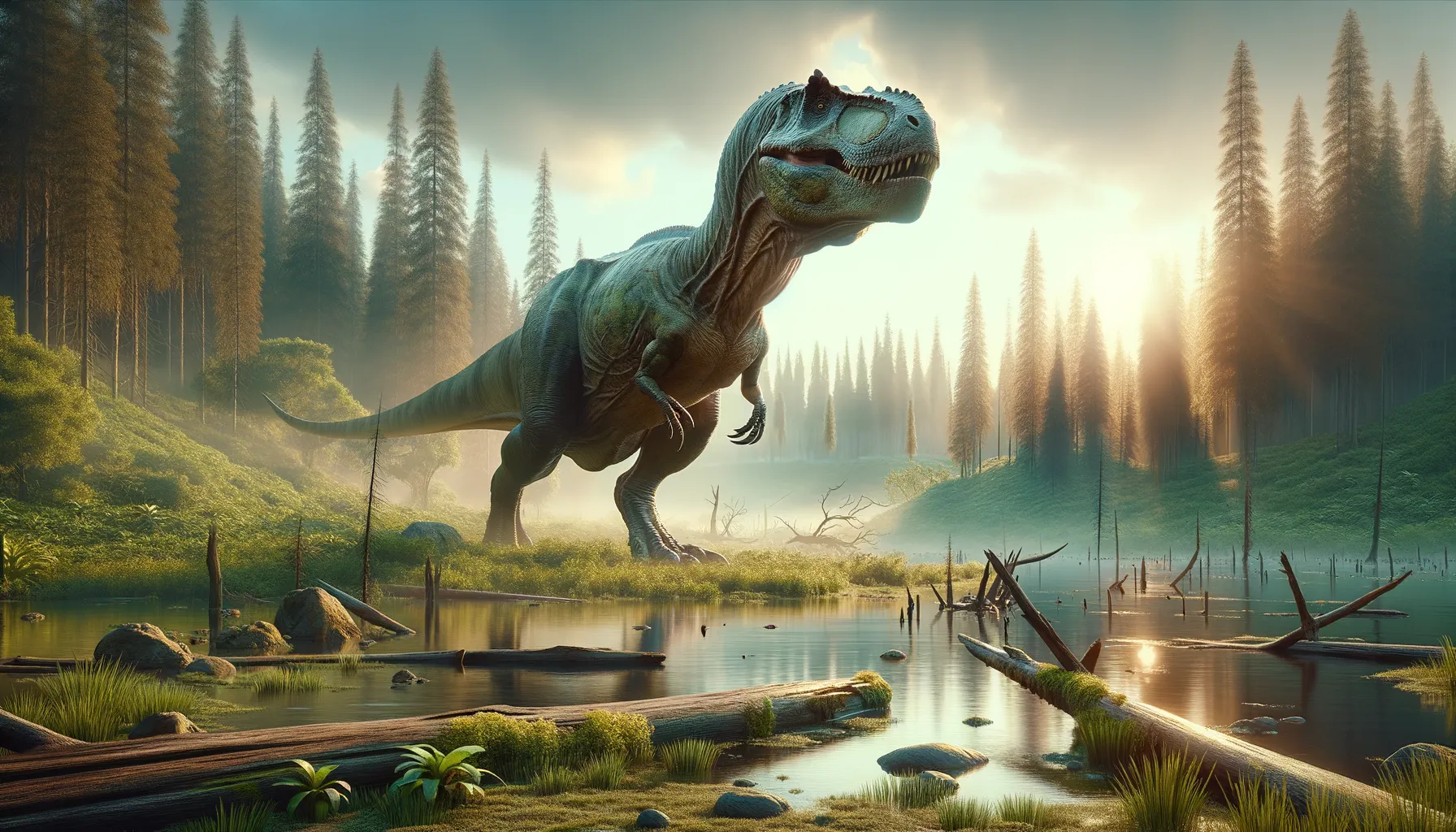
Tarbosaurus
A fierce predator of ancient Asia's wilds!
Period
Cretaceous
Length
Reached lengths of up to 12 meters.
Height
Stood about 4 meters tall at the hip.
Weight
Weighed between 4 to 5 tons.
Tarbosaurus was a large theropod dinosaur closely related to the Tyrannosaurus rex, living approximately 70 million years ago in what is now Asia. As an apex predator, it roamed the floodplains and forests of Late Cretaceous Mongolia. Its discovery has provided valuable insights into the ecosystem and predator-prey dynamics of its time, highlighting similarities and unique traits compared to its North American relatives.
Diet
Tarbosaurus was a carnivore, primarily preying on large herbivorous dinosaurs. Its strong jaws and sharp teeth made it a formidable hunter and scavenger.
Hunting
Tarbosaurus likely relied on surprise and ambush tactics to capture prey, using its size and power to overpower them. It might have also been a scavenger, taking advantage of carcasses left by other predators.
Environmental challenges
Living in a floodplain environment, Tarbosaurus faced challenges such as seasonal changes that affected food availability and nesting sites. Predation risks were also high due to competition from other large theropods. Natural disasters, such as floods and volcanic activity, could drastically alter their habitats.
Speed
Likely could run up to 25 mph in short bursts.
Lifespan
Estimated around 25-30 years.
First discovery
Discovered in 1946 by Soviet paleontologists in Mongolia.
Fun Facts
- Tarbosaurus was a large carnivorous dinosaur that lived around 70 million years ago in what is now Mongolia.
- It was closely related to the famous Tyrannosaurus rex, sharing many features like tiny arms and a massive head.
- Tarbosaurus had about 60 sharp teeth, perfect for chomping down on prey.
- Fossil evidence suggests Tarbosaurus may have had keen senses, particularly a strong sense of smell, which helped it hunt.
- Some scientists believe Tarbosaurus could have been much faster than other large predators, potentially chasing down prey at high speeds.
- Despite its fearsome reputation, Tarbosaurus probably had to compete with other large predators of its time for food.
- Tarbosaurus fossils are often found in the Gobi Desert, providing a challenging yet exciting location for paleontologists to explore.
Growth and Development
Young Tarbosaurus had to grow rapidly to reach adulthood, often facing threats from larger predators and rivals. They likely experienced high mortality rates during the first few years of life. Fossil evidence suggests they had an active growth phase, similar to modern birds.
Habitat
Tarbosaurus lived in semi-arid floodplains with open forests, river systems, and abundant plant life. Its habitat provided a rich ecosystem with numerous herbivorous dinosaurs, its primary food source. The region's annual floods would create fertile areas, supporting diverse wildlife.
Interaction with other species
Tarbosaurus coexisted with various dinosaur species, including herbivores like Saurolophus and Therizinosaurus. Competition with other carnivores was fierce, influencing their evolution and hunting strategies. Interactions among predators were likely aggressive, involving fights for territory and resources.
Natural lifespan
Tarbosaurus naturally lived for 25-30 years.
Reproduction
Tarbosaurus likely laid eggs, with nesting sites possibly located in relatively hidden or elevated areas. Nest and parental care behaviors remain speculative as direct fossil evidence is scarce. Young Tarbosaurus were likely vulnerable, requiring some degree of adult protection.
Social behaviour
Tarbosaurus might have been a solitary hunter, although there is some evidence suggesting potential pack behavior during stressful times or for protection. Aggression amongst individuals was probably common, especially during mating seasons. Social structures remain largely speculative.
Fossil locations
The majority of Tarbosaurus fossils have been found in the Nemegt Formation of Mongolia, known for its exceptionally well-preserved dinosaur remains. Important discoveries have also been reported from regions in China, highlighting its widespread presence in Asia. These fossils have contributed significantly to our understanding of Late Cretaceous ecosystems.
